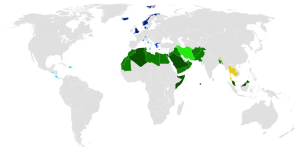Adel El Adawy, who graduated from The College of Wooster (German and Communication Studies) in 2011 Started a blog this past year. I highly recommend that you bookmark it and check back to read the frequent updates, including the most recent. About this internet venture, Adel writes:
Welcome to Egyptian Student Abroad,
This website brings the voices of young Egyptians together. Egypt has witnessed dramatic events in the past few months, that have impacted the political landscape. We see political parties being formed, more political awareness, and foremost greater political participation. At this pivotal moment in our nations history, we need to remember that there will be many more obstacles ahead of us.
Nelson Mandela once said: “After climbing a great hill, one only finds that there are many more hills to climb.” The uprising of January 25 is just the start of the ongoing revolution in Egypt. What we do now, is what will change Egypt and transform it into a liberal democracy.
There are many issues, debates, and events unfolding while we speak. This website seeks to provide a fresh perspective from young Egyptian students studying around the world. Young Egyptians are the hope of the future. Again, as Nelson Mandela once said: “Sometimes it falls upon a generation to be great. You can be that great generation.” What the youth of Egypt are doing is remarkable, but trust me the road is still long.

